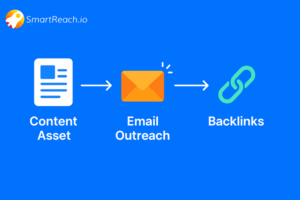Bulk Email Verification Without Manual Work
You’ve gathered a list of thousands of prospects. It looks solid on the surface, containing names, companies, email addresses, etc.
But here’s the catch: not all of those emails are real, active, or safe to send to.
If you send campaigns to a list full of invalid contacts, you risk bounces, wasted credits, and even damaging your sender reputation.
That’s why people opt for bulk email verification of the email list
It’s the process of cleaning large email lists in one go, making sure you only contact valid, deliverable addresses.
But while verification is essential, many teams still do it the hard way: manually checking or using slow, one-off tools.
This eats up time and delays campaigns.
So, how can you clean email lists quickly and without lifting a finger?
Let’s first look at why manual verification is a problem and then explore how to automate it completely.
Why is verifying email manually tedious?
Manually verifying emails sounds harmless at first.
You run a few addresses through a free tool, maybe check LinkedIn profiles to confirm job titles, and mark them off in a spreadsheet.
But as soon as your email list grows beyond a few hundred contacts, things get painful fast.
- It’s painfully slow. Checking thousands of emails one by one can take hours, or even days.
- Mistakes slip through. Typos, catch-all domains, or temporary emails are easy to miss when you’re doing it by hand.
- The data goes stale while you’re checking it. By the time you finish cleaning the list, some personalized events may already be outdated.
- It breaks your workflow. Switching between multiple tools, spreadsheets, and tabs is frustrating and error-prone.
- Campaigns get delayed. While you’re stuck cleaning data, your competitors are already sending emails.
Manual verification isn’t just tedious, it’s risky.
It slows your outreach, burns valuable time, and leaves room for errors that hurt your deliverability. The smarter way is to automate it entirely.
How automatic bulk email verification works
Instead of slogging through a spreadsheet, automatic bulk verification cleans your entire email list in minutes, no manual effort required.
You upload your list, connect your CRM, or use an integration, and the tool does the heavy lifting.
Here’s what happens behind the scenes:
- It checks if each email address actually exists.
- It filters out invalid, disposable, or risky addresses.
- It can even flag role-based emails like info@ or support@ that rarely engage.
- Some tools enrich your data while cleaning it, adding missing details like company names or job titles.
The best part?
Once set up, you don’t have to think about it. Your lists are verified automatically before they ever reach your cold email tool.
5 Methods for automating bulk email verification
Manual verification is slow and error-prone, but you can completely automate the process using modern tools.
Depending on your workflow, there are different approaches to verifying large email lists without juggling spreadsheets.
Here’s a breakdown:
1. Verification APIs for real-time checking
If you’re collecting leads continuously through signup forms, scrapers, or databases, APIs are a seamless way to verify emails the moment they enter your system.
- How it works: A developer connects your lead source to an email verification service.
- Benefits: Emails are cleaned instantly, no manual uploads required.
- Best for: SaaS teams or data-heavy sales orgs with in-house tech support.
- Example: A startup pipes every new lead through an API to ensure only valid contacts reach their CRM.
2. Native integrations with CRMs or Google Sheets
Verification services often offer plug-and-play integrations for CRMs like HubSpot, Salesforce, or Pipedrive.
If you manage contacts in Google Sheets, you can verify them automatically whenever new rows are added.
- How it works: Install the integration and map your fields.
- Benefits: Simple, no coding required.
- Best for: Sales teams managing lists directly inside CRMs or spreadsheets.
- Example: A recruiter uses a Google Sheets integration to automatically flag bad emails as soon as they’re added.
3. Cold email platforms with built-in verification
Some cold outreach tools verify emails for you, with no extra steps.
For this step, let’s take the example of SmartReach.io.
It automatically validates every prospect email you upload, completely free and unlimited.

- How it works:
- Sign up (it’s free), create a campaign, and upload your email list directly into SmartReach.io.
- The platform runs multiple checks in the background (SMTP verification, MX lookups, email format checks) before your first email goes out.
- Invalid or risky emails are filtered out automatically, so you only send to real contacts.
- Sign up (it’s free), create a campaign, and upload your email list directly into SmartReach.io.

- Why it stands out:
- Automatic validation: No separate tools or CSV uploads to manage.
- High accuracy: Up to 80% of bad emails are removed, reducing bounce rates dramatically.
- Completely free: Even trial users can verify unlimited email lists without paying extra.
- Automatic validation: No separate tools or CSV uploads to manage.
- Best for: Teams who want verification integrated right into their cold outreach workflow, no extra software, no manual cleanup.
- Example: A small agency uploads 5,000 leads into SmartReach.io, which cleans the list instantly before starting the campaign.
You can check the detailed process on how to validate an email address on SmartReach.io –How to Verify Email Addresses Before Sending Cold Email?
4. Hybrid workflows using automation tools
If your tools don’t integrate natively, platforms like Zapier or Make can link everything together.
You can set up a flow where new leads are automatically verified before they’re added to your outreach platform.
- How it works: Trigger → send lead to verification tool → only valid contacts sync to your email tool.
- Benefits: Flexible and works with almost any tech stack.
- Best for: Teams handling leads from multiple sources.
- Example: A consultant combines LinkedIn leads, web form submissions, and CSV imports into one verified database using Zapier.
5. Verification plus enrichment platforms
Some tools combine email verification with enrichment, filling in missing details like job titles, company size, or LinkedIn URLs.
This saves an extra step in building targeted campaigns.
- How it works: Upload your list once, and the platform both verifies and enriches it.
- Benefits: Cleaner data plus better personalization in one go.
- Best for: Teams that need accurate contact data and improved targeting.
- Example: A sales team verifies and enriches emails simultaneously, helping them segment prospects by role or industry without additional research.
Wrapping it up: Your quick checklist for clean email lists
Automating bulk email verification isn’t just about saving time; it protects your sender reputation, keeps bounce rates low, and makes every campaign more effective.
Before you hit send on any outreach, run through this quick checklist:
- Always verify before importing. Whether it’s through an API, an integration, or a tool like SmartReach.io, make sure no bad data sneaks in.
- Choose automation over manual cleanup. It’s faster, more accurate, and less frustrating.
- Look for verification built into your outreach platform. This way, you’re not juggling CSVs or extra software.
- Re-verify old lists regularly. Even great lists decay over time as people change jobs or emails.
- Combine verification with enrichment when possible. Clean and detailed data equals better targeting and personalization.
The bottom line: don’t wait until your campaigns start bouncing to fix your email lists. Put verification on autopilot so your cold outreach always starts with real, engaged contacts and no nasty surprises.
FAQs on bulk email verification
1. How do I verify bulk email addresses?
You can upload your list to an email verification tool or use a cold outreach platform like SmartReach.io, which verifies emails automatically before sending.
2. Can we automate email verification?
Yes. Modern tools offer API connections, CRM integrations, or built-in verification inside cold email platforms to handle this process in the background.
3. What is the best way to bulk email?
Always start with a clean list by verifying it first. Use a tool that can automate both sending and validation so you’re not managing two separate systems.
4. How often should I verify my email lists?
If you collect new leads daily, automate verification continuously. For older static lists, re-verify them every few months because email addresses decay over time.
5. Does email verification affect deliverability?
Yes, in a good way. Verifying emails before sending prevents high bounce rates, which helps protect your sender reputation and ensures your emails land in inboxes.
6. Is manual verification ever a good idea?
Only for very small lists or one-off checks. For anything larger, manual verification is time-consuming, inaccurate, and not scalable.
7. Are free email verification tools reliable?
Some are, but many have limits on list size or accuracy. Platforms like SmartReach.io offer unlimited, free verification built into campaigns, which is rare.
8. Can verification tools catch spam traps or temporary emails?
Most tools can flag risky or disposable emails, but no system is perfect. Look for one that runs multiple checks (SMTP, MX records, and format validation).




